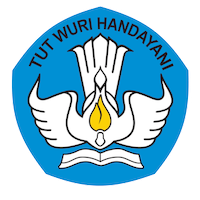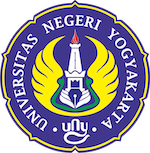The South Bantul region historically has the potential threat of earthquakes and tsunamis. However, this threat does not reduce the interest in developing tourism, especially along the coast of Bantul. This notion can be seen in the increasing number of centers of various activities and the expansion of population settlements. For this reason, active steps are needed to mitigate disasters.
"Yogyakarta, as one of the provinces with the potential for earthquake and tsunami disasters, requires effective strategies in disaster mitigation. One of the efforts is to hold an Earthquake and Tsunami Field School (SLG)," said the Head of BMKG, Dwikorita Karnawati.
Through the SLG activity, officials from the villages of Parangtritis, Tirtohargo, Srigading, Gadingsari, and Poncosari, BPBD, schools, communities, TNI, POLRI, and BMKG Headquarters in Jakarta are trying to monitor and facilitate the five most vulnerable villages to earthquake and tsunami disasters. This training builds the ability of villages to conduct disaster mitigation and self-management in the face of disasters. The target of this training is for each village to become a tsunami-ready community based on 12 UNESCO-IOC indicators. Thus, the community can assess potential hazards (assessment) and preparedness and respond accordingly to UNESCO-IOC standards.
Six students of Geography Education UNY consisting of Anzilna Vania Windy Safira, Aribah Luthfi Ardayani, Dinda Para Widya, Gunawan Sahrul Haj, Iqhbar Alqhoza Fathullah, and Septiana Tri Handayani as well as Nurul Khotimah as the accompanying lecturer, had the opportunity to observe the SLG activities directly. The participants received a pre-test, earthquake and tsunami early warning materials, hazard maps and disaster preparedness, and tsunami-prepared communities based on IOC-UNESCO guidelines on the first day. In particular, Dwikorita Karnawati also explained about 12 tsunami-ready indicators, tsunami-ready verification, and a tabletop exercise. On the second day, the participants explored the Parangtritis beach tsunami evacuation route, tsunami game board, and post-test. BMKG also provided recommendations for five villages participating in this year's SLG.
"We were able to experience and understand firsthand the attitude that must be taken during an earthquake, especially during a tsunami early warning, estimating the distance and travel time of the evacuation location with the arrival time of the wave, understanding the communication flow of stakeholders during a tsunami early warning to prioritize community safety and protection. With the earthquake and tsunami field school, we understand the correct implementation of tsunami disaster mitigation in the field based on the theory we have learned before," said one of the UNY students.
In addition to practical earthquake and tsunami disaster mitigation skills, the students also learned about the importance of building disaster-resilient infrastructure. The southern Bantul region, near a plate fault as the center of the megathrust, is quite prone to earthquakes and tsunamis. Implementing disaster-resilient buildings is an essential part of supporting sustainable cities and settlements. In addition, communities living in tsunami-prone areas need to start addressing climate change issues that directly affect the sustainability of existing communities and coastlines.





